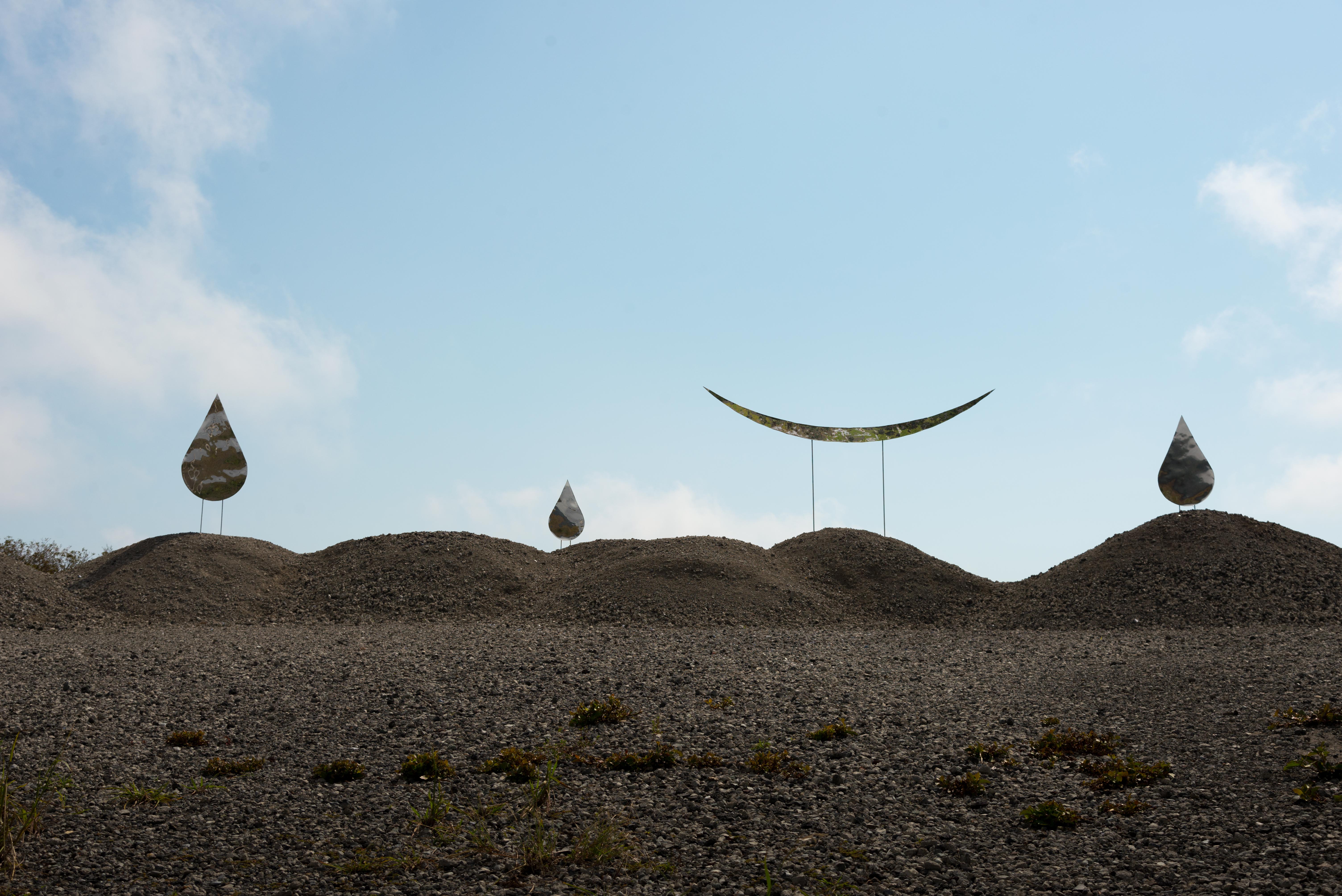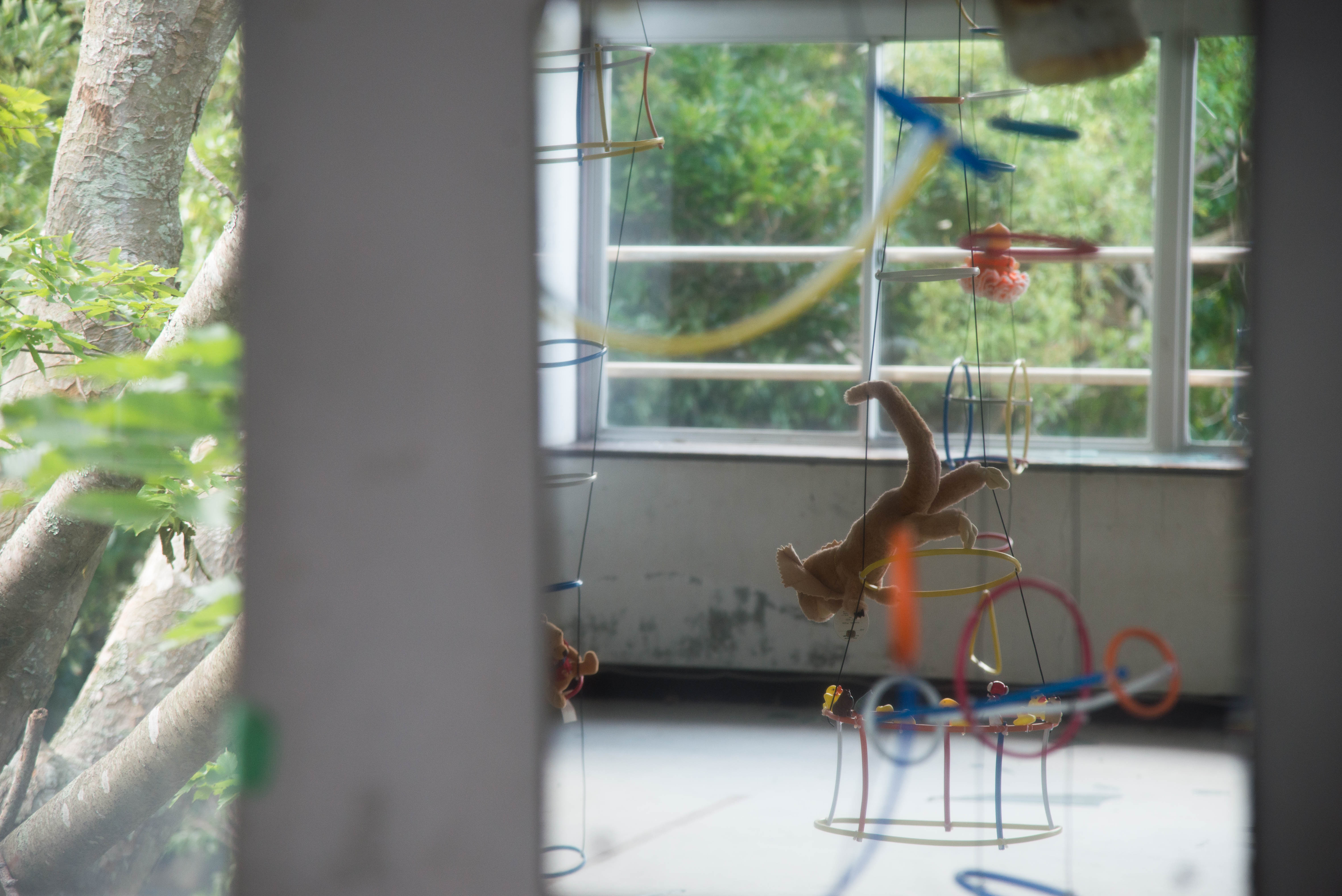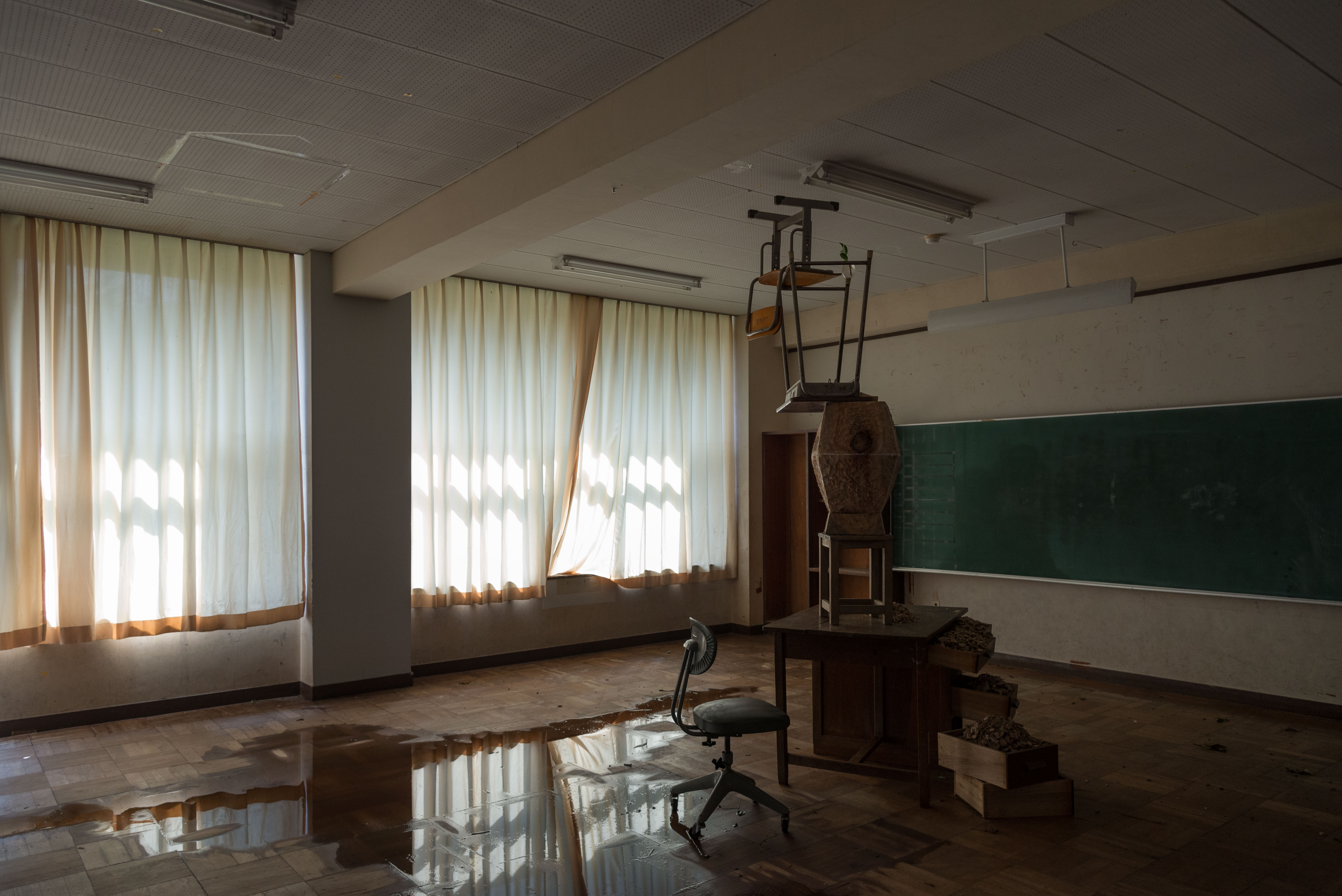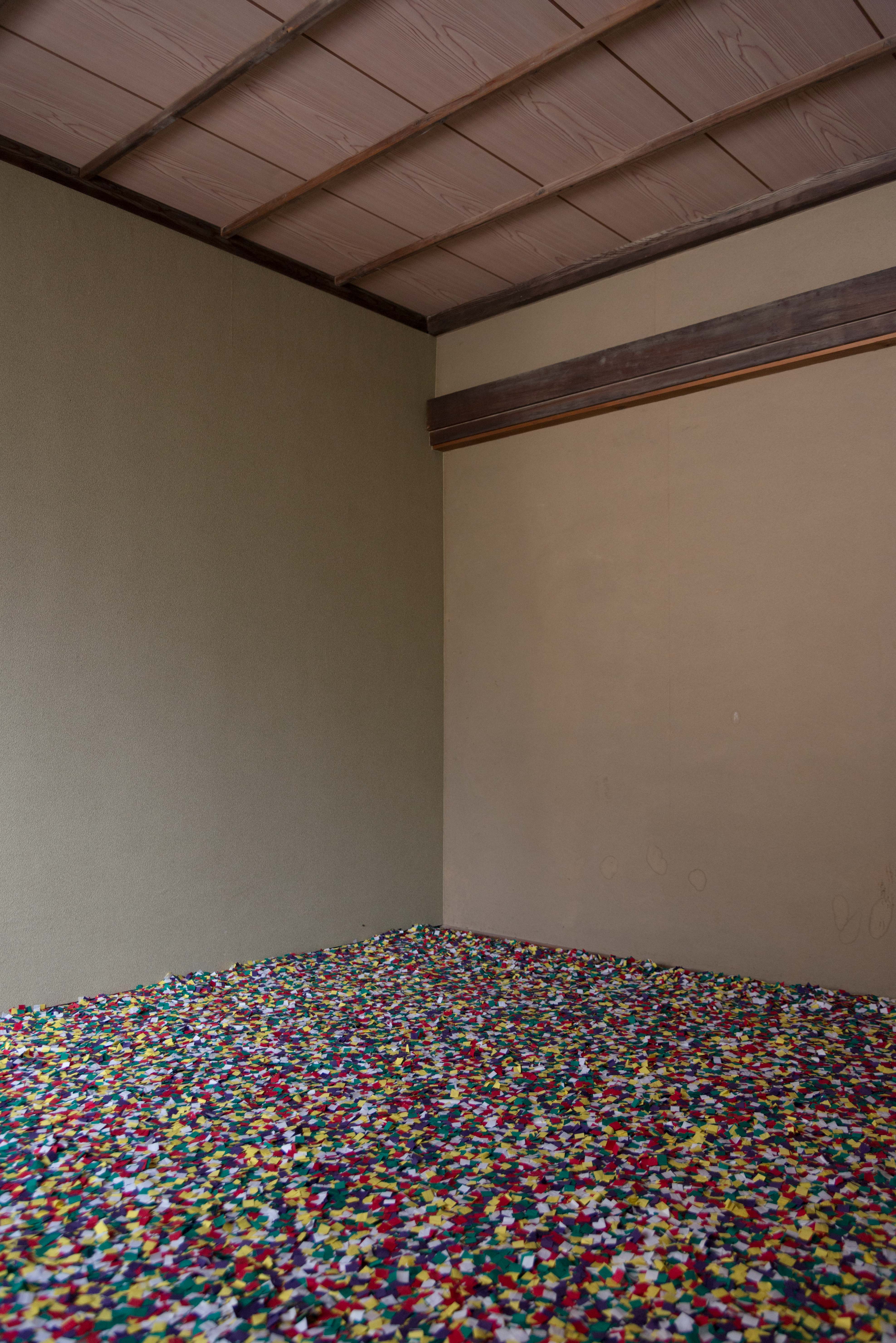FOR THOSE WHO HAVEN’T HEARD ABOUT ART ISLANDS TOKYO, THE EVENT HAS BEEN HELD FOR 9 CONSECUTIVE YEARS NOW. THE RECENT ENDED ART ISLANDS TOKYO 2019 TOOK PLACE IN THREE ISLANDS OSHIMA, NIIJIMA AND SHIKINEJIMA, THAT SPREAD ACROSS 300 KILOMETERS IN THE PACIFIC OCEAN
TEXT & PHOTO: NAPATCHARITBUTRA
(For English, please scroll down)
เพิ่งจบลงไปสำหรับ Art Islands Tokyo 2019 นิทรรศการศิลปะที่จัดกระจายตัวบนเกาะสามเกาะ นั่นคือ เกาะโอชิมะ เกาะนิอิจิมะ และเกาะชิคิเนะชิมะ ที่วางตัวในอยู่ในรัศมี 300 กิโลเมตร รอบเมืองโตเกียว โดยในครั้งนี้ “นิทรรศการ” จัดขึ้นในระหว่าง วันที่ 31 สิงหาคม – 15 กันยายน กินระยะเวลาเพียง 2 อาทิตย์เท่านั้น

Katachi no hajimari, Kotoba no hajimari, 2019 Artist: Junichi Nagata
หลายๆ คน คงไม่เคยได้ยินชื่อนิทรรศการนี้มาก่อน อันที่จริง Art Islands Tokyo นั้นจัดขึ้นติดต่อเป็นครั้งที่ 9 แล้ว (ครั้งแรกเริ่มจัดในปี 2011) โดยมีศิลปินชาวญี่ปุ่น Yoshiki Takata เป็นหัวเรี่ยวหัวแรงในการจัดงาน สิ่งแรกที่เราได้รู้จาก Takata คือ เขาไม่ได้นิยาม Art Islands Tokyo ว่าเป็นเทศกาลหรือมหกรรมศิลปะหรือคำใหญ่ๆ ใดๆ ทั้งสิ้น “เราไม่ได้อยากจัดงานสเกลใหญ่ และคงต้องขอบอกไว้แต่แรกเลยว่า วัตถุประสงค์ของการจัดงานนั้นไม่ใช่เพื่อเอางานศิลปะมาเป็นเครื่องมือของการส่งเสริมการท่องเที่ยว ศิลปะไม่ได้มีหน้าที่แบบนี้”
เราคิดว่าโควตข้างต้นนี้คงบ่งบอกถึงคาแร็คเตอร์ของ Art Islands ได้ดีทีเดียว ครั้งนี้มีศิลปินเข้าร่วมกว่า 29 คน โดยผลงานทั้งหมดโดยเป็นชิ้นงาน site specific ที่สัมพันธ์กับบริบทของพื้นที่ Takata บอกกับ art4d ว่ากฎเหล็กที่ศิลปินทุกคนต้องปฏิบัติตามในการเข้าร่วมนิทรรศการนี้คือ ทุกคนต้องมาตัวเปล่า และเริ่มทำงานจากศูนย์กับไซต์ที่ตั้งงานของแต่ละคน “หลายๆ คนตอนแรกไม่อยากเข้าร่วม แต่พอเขามาเห็นที่จัดแสดง ได้รับรู้ถึงบริบททางภูมิประเทศ / ประวัติศาสตร์ / ความเปลี่ยนแปลงของเมืองในปัจจุบัน ทุกคนตัดสินใจร่วมงานกับเราในทันที”

Ongakushitsu no warashi, 2019 Artist: Kazumi Kato
ต้องยอมรับว่าโอชิมะมีบริบทที่น่าสนใจ แต่เดิมในยุคเอโดะบริเวณ Habu Port เคยเป็นท่าเรือที่ร่ำรวยที่สุดแห่งหนึ่งของญี่ปุ่น เมื่อ 30 ปีก่อน ภูเขาไฟ Mihara ได้ปะทุตัวขึ้นและร่องรอยการไหลบ่าของลาวายังคงเห็นได้อยู่จนถึงทุกวันนี้ รวมไปถึงความเปลี่ยนแปลงบนเกาะโอชิมะในปัจจุบัน ที่จำนวนประชากรกำลังลดลงอย่างต่อเนื่อง (ตอนนี้เหลือ 7,000 คน) บริบทเหล่านี้จะถูกเล่่าผ่านงานศิลปะในวิธีใด ต้องติดตามอ่านบทความฉบับกันใน art4d270 ที่จะวางแผงในช่วงต้นเดือนพฤจิกายนที่จะถึงนี้

The recently ended Art Islands Tokyo 2019 took place on three different islands, Oshima, Niijima and Shikinejima, situated as a part of the Tokyo Prefecture, that spread across 300 kilometres in the Pacific Ocean with the exhibition which was held over the span of only two weeks, from 31st August to 15th September 2019.

The ghost lesson, 2019 Artist: Julien Signolet
For those who haven’t heard about Art Islands Tokyo, the event has been held for 9 consecutive years now (the first one was organised back in 2011) with Japanese artist, Yoshiki Takata, leading the curatorial direction. The first thing we learn from Takata is that he never really defines Art Islands Tokyo as an art festival or an art fair, or any other big words that would give out any irrelevant implications. “It has never been our intention for this to be a big-scale event and I have to tell you right now that the objective of Art Islands Tokyo has never been about promoting local tourism. That is not the role nor the responsibility of art.’
The statement helps clarify the character of Art Islands Tokyo quite correctly. This year, the event welcomed 29 artists with all the works being site-specific projects that closely engaged the context of their locations. Takata told art4d that the main rule that every artist needs to comply with in order to participate is that they have to come the site bare-handed since they would be asked to start working with the designated site from zero. “Many artists were reluctant to join at first but after they saw the sites and became more aware of the historical and geographical context including the changes that the town is going through, everyone was on board immediately.”

Between Sky and Earth, 2019 Artist: Harue Takami
It is undeniable that Oshima is a town that has an incredibly interesting context and background. The island’s Habu Port was one of the most affluent ports during the Edo Era before the eruption of the Mihara Volcano whose traces of destruction can still be seen in the form of cooled lava. Today, Oshima Island is going through its own population issues with the number of local residents on the islands continually dwindling (the current number of the islands’ inhabitants is 7,000). How were these issues and contexts recounted and interpreted through the artworks of 29 artists? Find out more in the upcoming 270th issue of art4d, this November.

